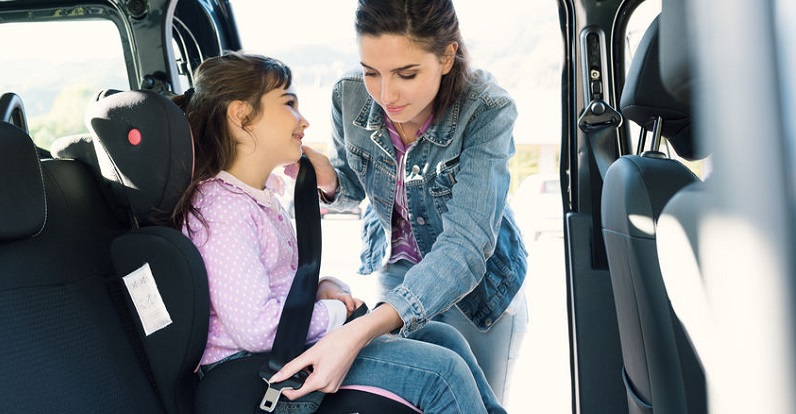In the event of an auto accident, the safest place in a vehicle for infants and children younger than 13 years is the back seat.
Airbags may be great for reducing injury in an auto accident but may be deadly for children.
First developed in the 1950s, airbag technology became ubiquitous after Ford made the devices standard in all production vehicles in 1990. Over the years, airbags have protected many drivers and passengers during frontal collisions and have likely saved thousands of lives.
But for the youngest passengers, sitting near an airbag can be deadly.
Although a vehicle equipped with an airbag is generally safer than a vehicle without one, airbags can be dangerous for children under 13 years of age. According to Stanford Children’s Health, no children so young or weighing less than 65 pounds should ride in the front seat of a vehicle with airbags on the passenger side. The safest place for them to sit is in the center of the back seat, buckled into a child safety seat or a lap-and-shoulder seat belt.
Remember these nine key facts about airbags and children:
- Front airbags are installed in the steering wheel to protect drivers and in the dashboard to protect passengers. Front airbags are not intended to protect vehicle occupants from side and rear impacts or from rollover accidents.
- Airbags are intended to protect average-sized adults, not small children. Children who come into contact with airbags during impact are twice as likely as adults to suffer serious injury.
- Once children are old enough to sit in the front, the seat should be moved as far back from the dashboard as possible.
- A fully inflated airbag is designed to cushion passengers. But an airbag that is still moving will often lift children off the seat in the event of an auto accident, causing them to hit their head on the ceiling of the vehicle.
- Infants placed in the front in rear-facing seats are the most likely to be injured by airbags because of how close their heads are to the dashboard. The American Academy of Pediatricians, therefore, advises parents to never put a rear-facing car seat in a front seat that has an airbag.
- Although side airbags are typically installed in the front seats of a vehicle, some manufacturers are now installing airbags in rear seats as well. Check your owner’s manual for information about airbag placement.
- Car manufacturers now install switches that allow you to deactivate an airbag if a child is seated in the front. But these switches should be used only if a child has special health care needs that require constant observation and no adult is available to ride in the back seat with him.
- Automakers are developing “smart” airbags that will sense whether a passenger is too close to the airbag or is not properly belted in.
- Mercedes Benz is developing rear-seat airbags that will conform to smaller-sized occupants and objects like car seats and cargo in such a way as to direct the force of the expanding airbag past an obstacle rather than against it.
You can eliminate the risk that your small child will be harmed by an airbag by buckling him into the back seat for every ride, even for the shortest excursions.

